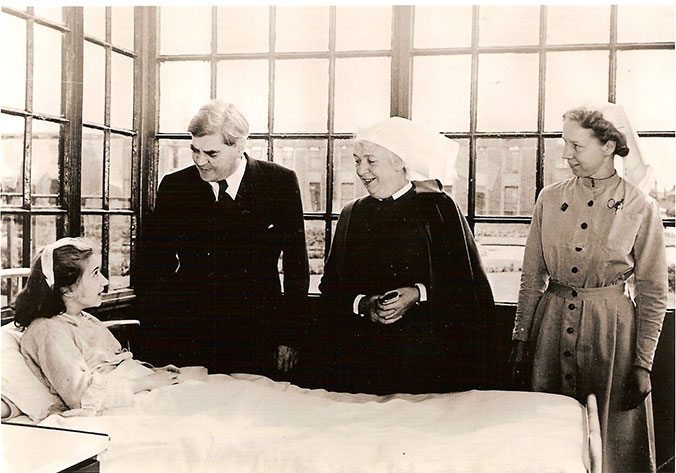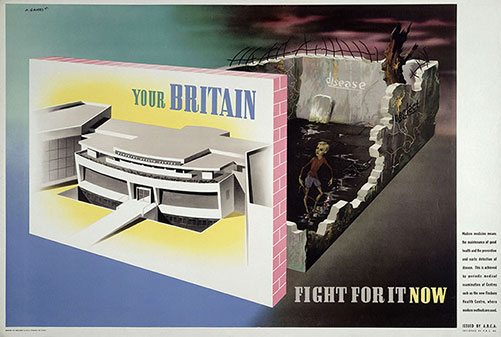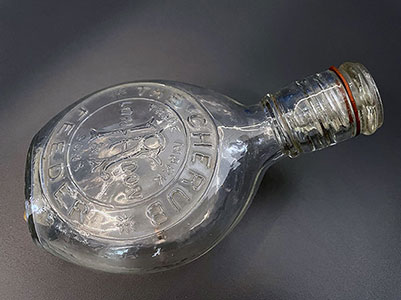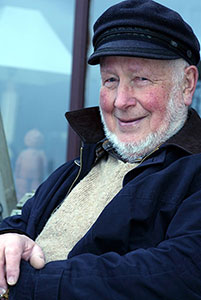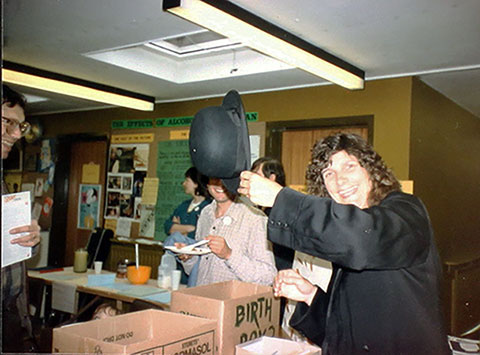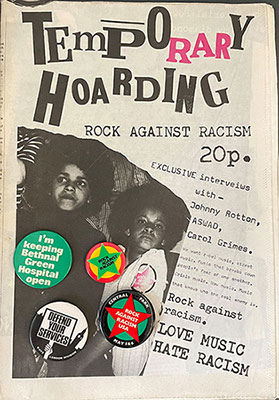Banner image: Aneurin Bevan, Minister of Health, on the first day of the NHS at Park Hospital, Davyhulme, 5 July 1948. University of Liverpool.
“It is my conviction that in a better society, no longer class-divided and profit-driven, many of the medical problems which now present would not exist. I’d like to think there might even be a lot fewer doctors, social workers and do-gooders because good would be done by society itself. But in this imperfect and worsening world we desperately need our doctors, our hospitals, our nurses and our ancillaries.” David Widgery, ‘The National Health: A Radical Perspective’ 1988
Step back into time
"My time working at a community arts centre in the 70s gave me a sense of how the arts could enliven people’s everyday lives. At Princes Park we were able to show that health is about enjoyment and pleasure and not simply the absence of illness. Our fairs focused on prevention of ill health and the idea that everyone is entitled to good health. For example, our 1983 UB40 fair was named after the current unemployment benefit form and the reggae band, UB40. In addition to music, healthy refreshments, blood pressure and peak flow checks, the fair included benefits advice and a discussion about ways to deal with the stress of being unemployed."
"I don't think even the most hostile Tories anticipate the abolition of the health service. I think what is more emerging is a two-tier system in which the very excellent health service is predominantly for those who privately insure and pay, and they’re a growing number. And the rest of the health service is somewhat of the second-tier system. I think that primary care, the general practice and the associated health centres and so on, they are very slow at getting off the ground - painfully slow - are experiencing something of a genuine renaissance at the moment. I think there is probably more going on in primary care and among general practitioners, some more radical experiments, and paradoxically, the independent contractor status, which many of us would feel is rather the small shopkeeper mentality, where the GP has to contract rather than is a salaried person. Paradoxically, that protected sheltered status has allowed more radically minded general practitioners the room to manoeuvre independently. And I think I'm impressed reading the material from general practitioners, their research and periodicals and so on, how much pioneering outreach work is going on involving prevention, screening and so on."
Interviewed by Michael Neve in 1982 (Wellcome Collection).
"You know, we were right next door to a dodgy estate, we had people injecting into their groins down on the stairs to the car park, but we never had graffiti, we never had any trouble. Nobody was attacked or hassled, nobody was, you know, and people looked out for us, you know, if something went wrong. Somebody else in the estate would put it right. It was a very nice - not in my practice - very nice story, the other Professor of General Practice, Roger Higgs, doing a house call off the Walworth Road one night, and for some reason, he put his bag down, his doctor's bag. Before he knew it, it disappeared, with lots of drugs in it. And he got to the patient he was visiting, he said "I'm sorry, I'm here, but somebody's stolen it." Well, the next morning, it was back in his surgery! And there's a nice sort of self-regulating thing about some of these communities."
"So, the '66 Charter then enabled general practitioners to employ staff and get 70% of that time reimbursed for their salary. So, it was encouraging GPs to have receptionists and secretaries and that. And also, there was a whole complicated business of, they could build health centres and get notional rents for them. They could raise the money, build a surgery, and then get a rent from the National Health Service to pay for their mortgage basically, called the notional rent it was. And that's when we all launched off! I mentioned the Caversham, the Caversham before that were an unconverted house in Kentish Town, and they got together with the James Wick and built a whole new health centre on that basis following the '66 Charter. My health centre where I started in Goodinge, funnily enough, had actually been built by the Housing Department. Islington Housing Department had built a health centre on the assumption that they would get health service and general practice money back in terms of rent and community health services using it for rent. And the two doctors who were going to go into it died by the time it was built, so that's when I went there at that stage. But those were the days again, working with the local authority!"
"We’d got lots of stuff we'd identified that we needed help with, and it was not being paid attention to. I mean the sort of infrastructure looking after deeply disturbed families who were seriously at risk. Nobody gave a toss about. We had ten children living directly opposite us on the estate who were on the at-risk register. Two-year-olds, you know, ten kids. The health visitors were tearing their hair out they weren't getting supported. So, what we did was we set up a parent's group for that estate. We didn't identify them - the children at risk - because it was confidential, but we set up a parent's group which was run by Yvonne [Begley, a trainee who became a partner], and this we set up in, I suppose it must have been about ‘91, plus the health visitor. But the consulting rate of the ten families who all came in one way or another to get involved with that, their consulting rate went down, and it also became more appropriate and so we were keen to carry on with, you know, we knew these kids. It arose from us saying, we had a post baby clinic meeting, we said we know that little Johnny is going to end up in prison when he's seventeen or eighteen, we know. And there was no, and there was a complete consensus between the health visitor, the nurses and the doctors. What can we do about it? And so, we did a multitude of things."
Thank you for your feedback. Your response will help improve this page.
